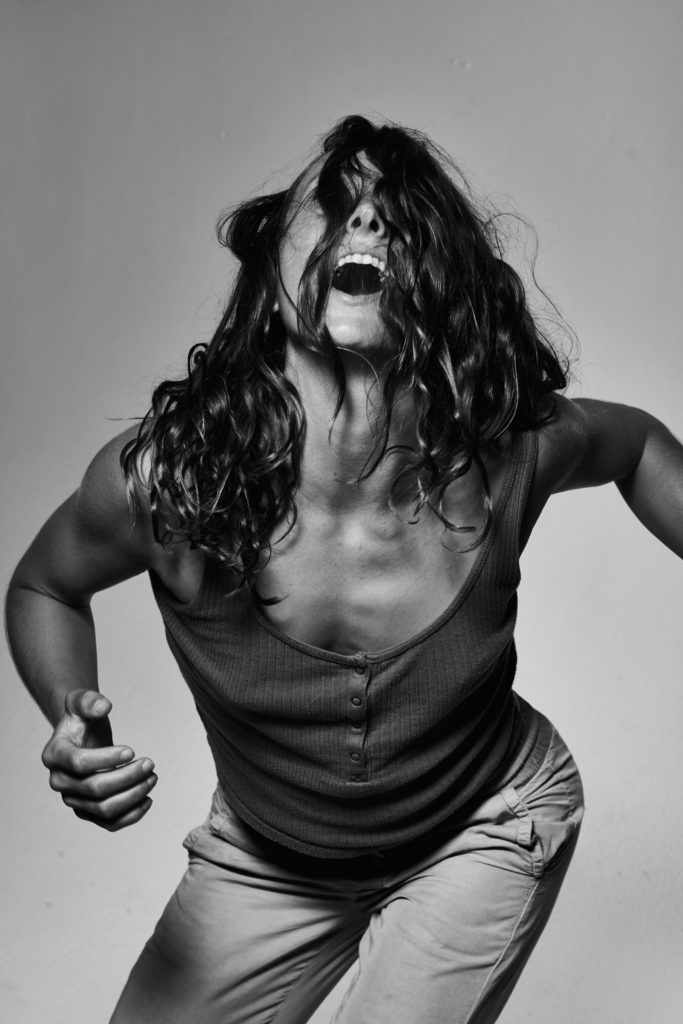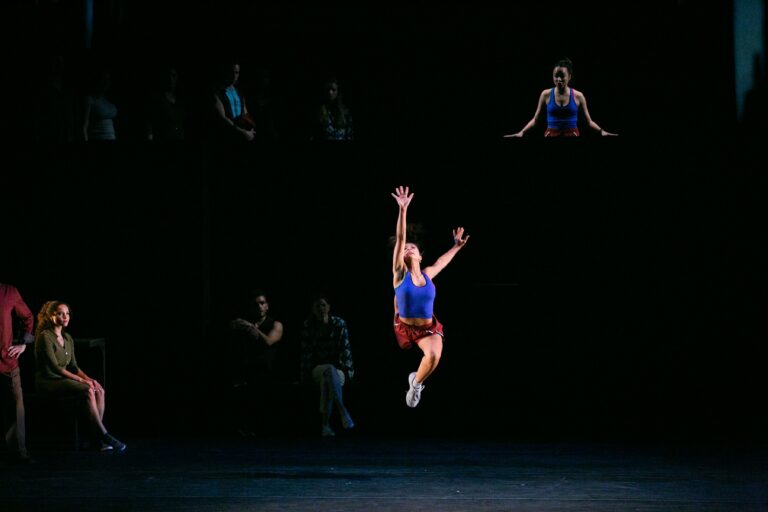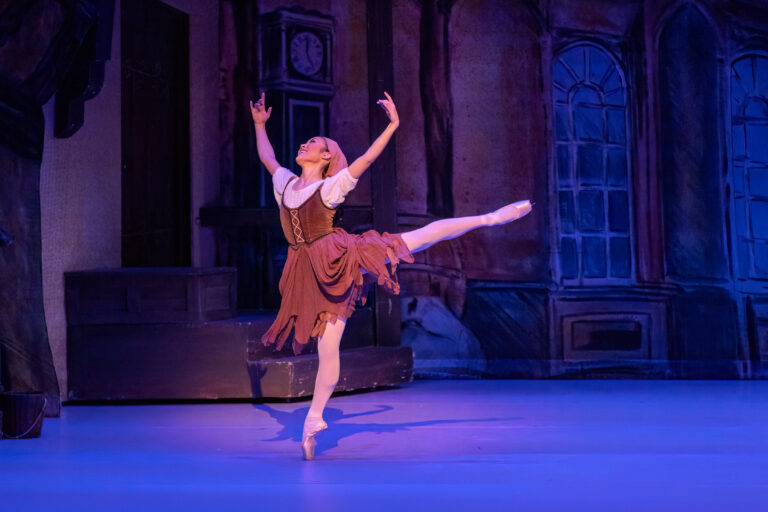
Chelsea Ainsworth has centered her professional dance career on serving those in need through art. From the time she was in high school at North Carolina School of The Arts, she was using dance to support and heal. Her first project involved bringing artists from UNCSA to get together and perform, and the proceeds went to a foundation supporting individuals with AIDS. That event became the blueprint for all of her subsequent projects.
After attending college at Juilliard, Ainsworth kept her outreach going by bringing together dancers, actors and musicians to perform for a variety of causes. She and her now husband Kyle Netzeband along with their friend Adrian Rosas, produced the performances in their living room in Harlem and called it ‘Arts For A Cause’ for roughly seven years. (The three officially established Arts On Site as a nonprofit in 2016.) At last, the landlord of a building in the East Village attended one of her shows, where 100 people were crammed together observing the performance. “He saw what we were doing and told us he thought it was really awesome, but that he thought we needed more space,” she says. So, he let her run an event in his apartment inside the fifth floor of the building. A few months later, she had taken over two rooms in the building (formerly a training gym and a yoga studio) and converted them into a couple of dance studios. “In order to make rent we started doing studio rentals that worked in conjunction with the events,” she says. Running parallel to that, Ainsworth and her husband bought property upstate and created a retreat and residency venue where artists from a range of mediums could go and work on pieces that they would present later at Arts On Site. At the residency, artists get one to two weeks of free lodging and access to a dance studio. In return, they do four to five hours of work to help keep the place running. “It’s a work-trade residency,” Ainsworth says. As Ainsworth expanded the function of Arts On Site to move beyond service performance opportunities, she still kept the framework of Art For a Cause alive as a monthly event—albeit with a new name (Performance Party) and purpose. “We highlight five or six artists in an evening, and the money goes back into running Arts On Site.

Since the onset of the pandemic, Ainsworth and Arts On Site have worked to morph with the changing needs of the performance industry. When lockdown hit, she and 12 other artists went to their retreat and residency venue upstate to quarantine together in a space where they could still create work and perform for one another. At the same time Arts On Site began presenting performances online. In June 2020, Ainsworth launched a rooftop performance series called “Arts On The Roof” that allowed audiences to safely attend live performances in Manhattan during July and August. Their first act was a company called ARKAI Music, and included an electric cello and violin. “It was really emotional,” Ainsworth says. “We had 10 audience members, each sitting six feet apart. We were all bawling after everything we had been through that year.” Eventually, Ainsworth was allowed to bring these performances inside, and in May 2021, Arts On Site turned one of their studio spaces into a more professional black-box performance space.
With each twist and turn of the pandemic, Ainsworth and her team have been there to support dancers in need of space and performance opportunities. “Every day we sit down and ask questions about what is possible, and every day we find new answers that allow our work to shift to fit the needs of the community,” she says. “Our ability to pivot pulled us through to where we are now.
Beyond Arts On Site, Ainsworth has danced for Johannes Wieland/Staatstheater Kassel in Germany, is the co-artistic director of her own company, Dual Rivet, and is currently teaching a contemporary partnering class at Juilliard with her business and artistic partner, Jessica Smith. Here, she shares who her most dance influential teachers are, the correction that made all the difference, and her advice to dance educators training students who aspire to a career like hers.
On her most influential teacher: “There are different stages in a dancer’s life, and I have a teacher for each stage. I grew up with Cristy Curtis at my first studio, Pierrette Sadler [now CC & Co. Dance Complex], and she taught me the joy of dance. She said that dance is fun, and if it’s not fun it’s not worth it. Then at the University of North Carolina School of the Arts, I studied privately with Melissa Hayden and she taught me that dance was a way of life. She was so committed, and showed me that you could choose it as a way to make a living. Then, at Juilliard, Risa Steinberg taught me that dance could tell stories—that it’s not just steps.”
The most helpful correction she’s ever received: “I was working on a Jerome Robbins piece with Alexandra Wells, and I was supposed to be this woman who attracted men. I was very young and didn’t know how to do that. I told her that I didn’t know how to get into this character. She said, ‘You don’t have to pretend to be this character, because all of the stories and experiences in the world are already in you. All you have to do is pull out what is already there inside.’ All of us can be all of the things. Even if you don’t identify with being an angry person, you still have anger within you to pull out. Now, if I approach anything if I don’t think I will be good at, I realize it is already in me and I can simply pull it out.”

On the biggest turning point in her training: “The biggest turning point in my training was when I made the choice to be a dancer and left home at 13 to study dance in school. I went from ‘This is really fun’ to ‘This is my life now.’ That created the biggest shift in my dancing because I wasn’t learning to be good, I was learning because it was my path.”
On her advice to dance teachers: “Remember what it was like to be a student. Remind your students that there are stages to growth. Every dancer is on their own path, and every dancer is different. You can choose your own adventure in the dance industry. Hold on to that and let it guide you.”




